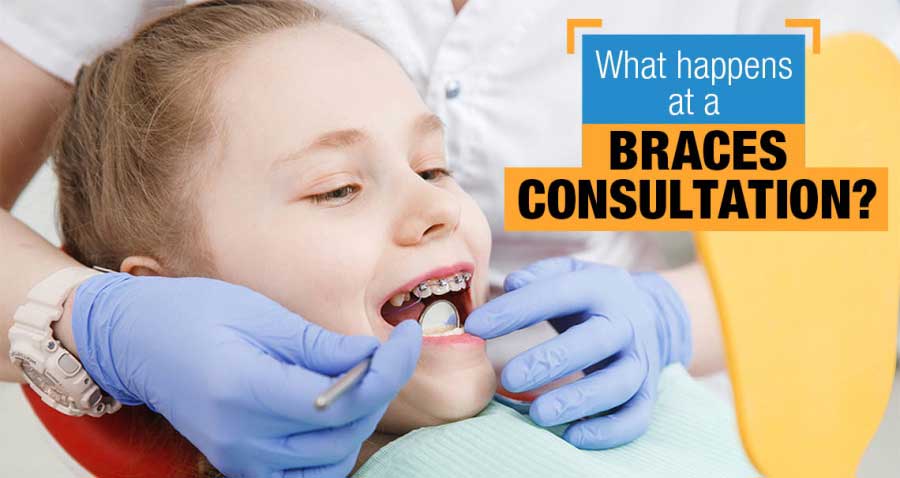How Cumming Orthodontics Addresses Common Braces and Invisalign Issues
How Cumming Orthodontics Addresses Common Braces and Invisalign Issues
Blog Article
Comprehensive Guide to Orthodontics Procedures for Dealing With Oral Misalignments
In the realm of orthodontics, the trip to attaining a completely aligned smile involves a myriad of treatments tailored to correct dental imbalances. From typical dental braces to invisible aligners and even surgical choices, the area of orthodontics supplies a series of options to resolve differing levels of oral irregularities. Comprehending the ins and outs of each treatment, including their devices, advantages, and possible disadvantages, is crucial in making notified decisions regarding one's orthodontic treatment. As we browse through the comprehensive overview to orthodontic treatments for dealing with dental misalignments, the elaborate details of each approach will certainly unravel, shedding light on the course towards a useful and unified oral positioning.
Orthodontic Procedures Introduction

In enhancement to conventional dental braces and clear aligners, orthodontists may likewise advise other treatments like headwear, palatal expanders, or retainers to address details positioning concerns (cumming aligners). These procedures are customized to every patient's unique needs and may involve a mix of therapies to achieve the desired results. Regular adjustments and monitoring are vital components of orthodontic therapy to guarantee development is on track and to make any type of essential modifications in the process. By undergoing orthodontic treatments, clients can not just achieve a straighter grin but likewise improve their total oral wellness and function.
Traditional Braces: How They Function
When taking into consideration orthodontic therapies for oral misalignments, traditional braces stand out as a reliable method for dealing with teeth positioning. Conventional braces include braces, cables, and bands that collaborate to apply continual pressure on the teeth, progressively relocating them into the desired placement. The braces are affixed to the teeth making use of a special adhesive, and the cords are threaded via the brackets. By adjusting the tension of the cords, orthodontists can regulate the direction and pressure put on each tooth, guiding them into correct alignment in time.
As stress is used to the teeth via the braces, the bone bordering the teeth is improved to support the new tooth placements. People will need routine modifications at the orthodontist's workplace to make certain the braces proceed to apply the proper stress for effective teeth motion.
Unnoticeable Aligners: Benefits And Drawbacks
These clear, personalized trays are essentially unnoticeable when put on, making them an appealing alternative for individuals seeking an extra visually pleasing orthodontic therapy. Patients can get rid of the aligners before eating or cleaning their teeth, reducing the threat of food getting stuck in the device and streamlining the cleaning procedure.

Surgical Orthodontic Options
Surgical interventions in orthodontics present viable alternatives for resolving complicated dental imbalances that might not be successfully settled with traditional orthodontic therapies. While undetectable aligners and standard dental braces can fix numerous orthodontic issues, certain cases call for surgical intervention to achieve ideal outcomes. Surgical orthodontic choices are usually advised for extreme malocclusions, significant jaw inconsistencies, and cases where the underlying bone framework needs adjustment to achieve proper alignment.
One common medical orthodontic treatment is orthognathic surgical treatment, which involves rearranging the jaws to deal with practical issues such as difficulty talking or eating. This surgical treatment is frequently done in cooperation with an orthodontist that helps align the teeth before and after the procedure. Surgical orthodontics may additionally entail procedures to expose influenced teeth, get rid of excess gum cells, or reshape the jawbone to create an extra unified facial profile.
Before taking into consideration medical orthodontic choices, patients undergo a comprehensive examination to establish the requirement and possible advantages of such interventions. cumming invisalign. While surgical procedure might appear overwhelming, it can significantly boost both the feature and appearances of the smile in instances where standard orthodontic treatments fail
Retainers and Post-Treatment Treatment

Failing to comply with post-treatment treatment instructions can result in regression, where the teeth slowly move back in the direction of their initial placements. Constant retainer wear, great dental hygiene, and normal oral check-ups are vital for keeping the outcomes site here achieved via orthodontic surgery and ensuring the long-lasting stability of the remedied oral alignment.
Conclusion
In verdict, orthodontic treatments supply various choices for dealing with dental misalignments. Surgical orthodontic options are available for a lot more serious misalignments. Overall, orthodontic procedures can effectively enhance oral health and wellness and visual look.
As we navigate with the thorough guide to orthodontic procedures for fixing dental imbalances, the detailed read this article information of each method will certainly unravel, shedding light on the path towards a functional and unified dental alignment. - orthodontist
One of the most common orthodontic treatments is the usage of braces, which consist of metal brackets and cords that use mild pressure to progressively change teeth right into the wanted setting.When taking into consideration orthodontic treatments for oral misalignments, traditional dental braces stand out as a time-tested approach for correcting teeth positioning. Furthermore, invisible aligners might not be ideal for complicated orthodontic concerns that need more considerable teeth motion, as they are normally recommended for moderate to moderate instances. Retainers are custom-made orthodontic gadgets made to hold teeth in their dealt with placements after the completion of orthodontic therapy.
Report this page